Pamplona (Spain) is the capital of the autonomous region of Navarra, located in the northern part of the state. Pamplona (Pamplona) is located at the foot of the Western Pyrenees, on the banks of the river Arge. The area of the city is 23.55 km², and about 198,500 people live on this territory.
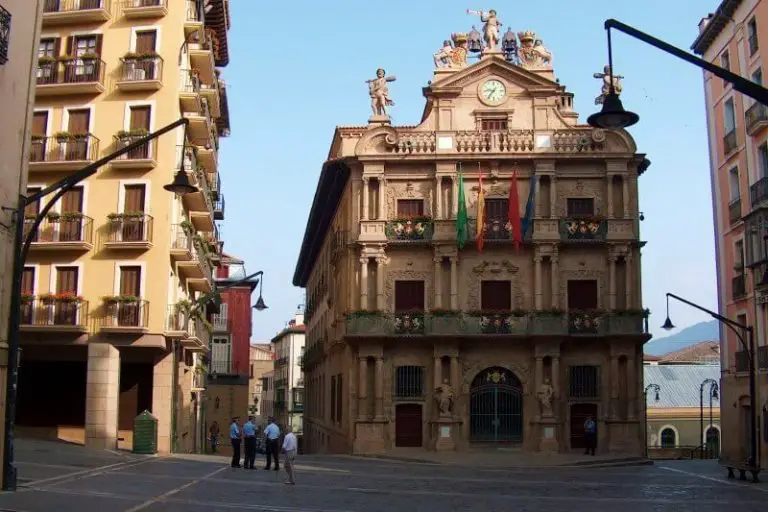
Pamplona is one of the oldest cities in Spain – it dates back to 74 BC. In addition, Pamplona is also one of the most famous cities in Spain. But this city received worldwide fame not because of its age and historical sights, but because of the San Fermin festival.
Feast of San Fermin
The festival dedicated to the patron saint of Pamplona, St. Fermin, traditionally held since the XII century. But gradually the significance of the religious component of this holiday became less and less, and in the twentieth century, San Fermin became exactly the festival that can be seen now.
Interesting fact! Every year during San Fermin, up to 3 million people come to Pamplona not only from all over Spain, but also from all over the world.
The fiesta lasts a week: it starts on July 6 at 12:00, when a rocket is launched from the balcony of the city hall. San Fermin is everyday fun festivities with music and dancing, carnival parades, street performers, and nightly fireworks. But the main event is a rather dangerous entertainment of ensierro – running along the city streets of people from angry bulls.
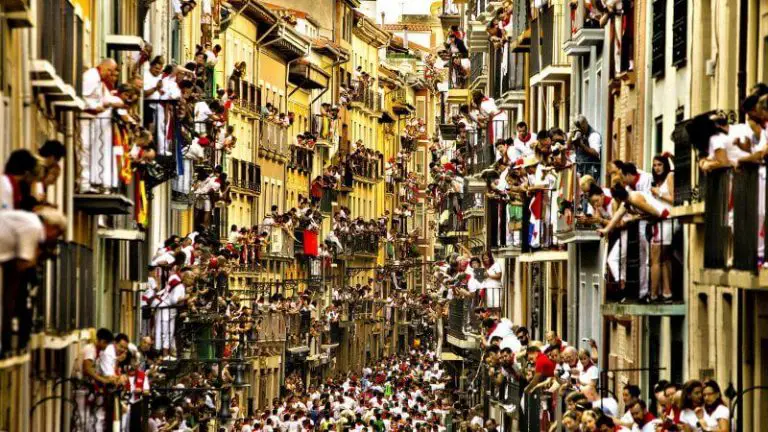
The running of the bulls in Pamplona takes place from the second day of the fiesta, from July 7. At 7:00 these animals are released from the corral, and along the fenced streets of the city they madly rush to the bullfighting arena. Previously, the bulls were simply led to the arena for battle, and in 1856 for the first time what happened now most attracts people in the fiesta: hundreds and desperate daredevils flee in front of and next to the bulls, risking injury and even death. Such runs of bulls and people take place every day for a week while the fiesta lasts.
Important! The most inveterate extreme tourists can also take part in ensierro, provided that they are already 18 years old and that they are sober. But it must be borne in mind that injuries resulting from this are not considered an insurance event.
The race lasts only 2-3 minutes, its total distance is 849 meters. The corral is next to Santo Domingo Square, and the bullfighting arena in Pamplona is located on Hemingway Square, southwest of the old quarter.
It is not at all necessary to try your luck in the race with the bulls, because you can just watch the enserro. Thousands of people gather behind fences that protect against these animals. A huge number of people watching the spectacle from the windows, or sitting on the balconies of buildings.
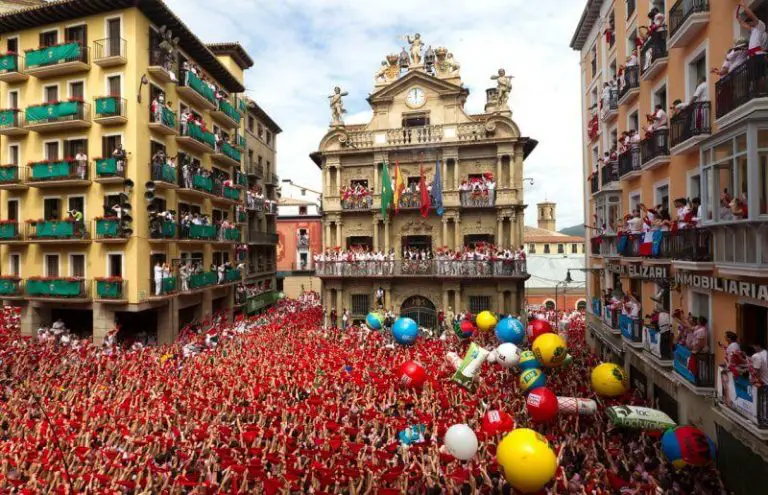
On a note! Renting a place on the balcony, which faces the street where the bulls are racing, costs from 100 € per person. This price includes wine and snacks.
San Fermin ends up with a much less secure event than a bull race. On the last evening of the fiesta, on June 14, a solemn mass takes place in the cathedral, and thousands of people gather on the square in front of the cathedral. They hold lighted candles in their hands, which is why the square takes the form of a huge sea of fire. entierro
Interesting fact! In 1923, during San Fermin, Ernest Hemingway visited Pamplona. The writer was so shocked by the running of the bulls that he wrote a story about him, “And the Sun Rises.” It was Hemingway’s book that brought fiesta and ensierro worldwide fame.
City attractions
Given the fact that Pamplona has been around for centuries, it is only logical that there are many historical sights in this city. When walking along the beautiful old streets, the meaning of the phrase “Pamplona is not only San Fermin” becomes clear. Although among the attractions of Pamplona there are those dedicated to this festival.
The hallmark of Pampluna, which in Spain and around the world gained fame thanks to the running of the bulls, is the sculptural group Encierro. This attraction is located in the center of Pamplona, on the Avenida Roncesvalles.
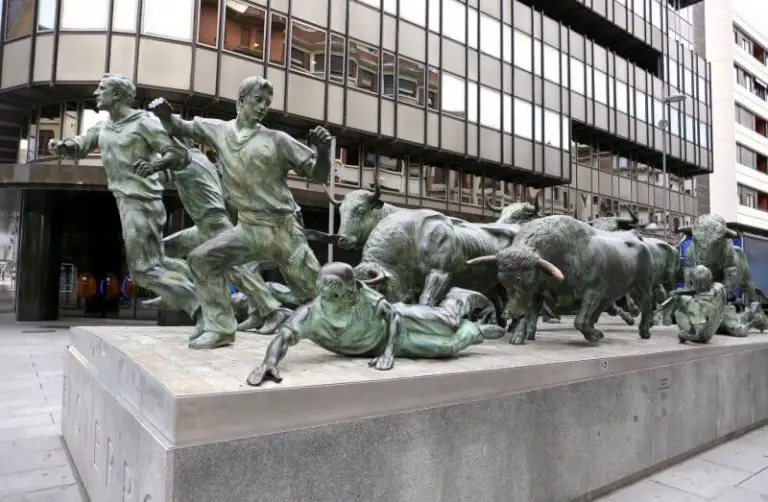
Interesting fact! The weight of the monument exceeds 30 tons, its dimensions are 11 x 4 meters, and the project cost is 661 113 €.
The Encierro monument, which has become a landmark of Pamplona, is characterized by a very realistic design. People, animals – all life-size, with the smallest details. The author managed to convey the emotions and atmosphere of the ensierro in motion: racing angry bulls, running men, whose facial expressions convey all the tension of the moment.
Interesting fact! Sculptor Rafael Huerta captured himself in one of the runners: the third on the right side, the one who fell and looks towards the bulls.
Tourists visiting the city of Pamplona in Spain take photos not only near the monument – many climb on bulls on horseback. And you can also make a wish and hold on to the horn of a bull, already polished to a golden sheen – they say that the desire will certainly come true.
Before a new arena was built in 1922, bullfights took place on the Plaza del Castillo.
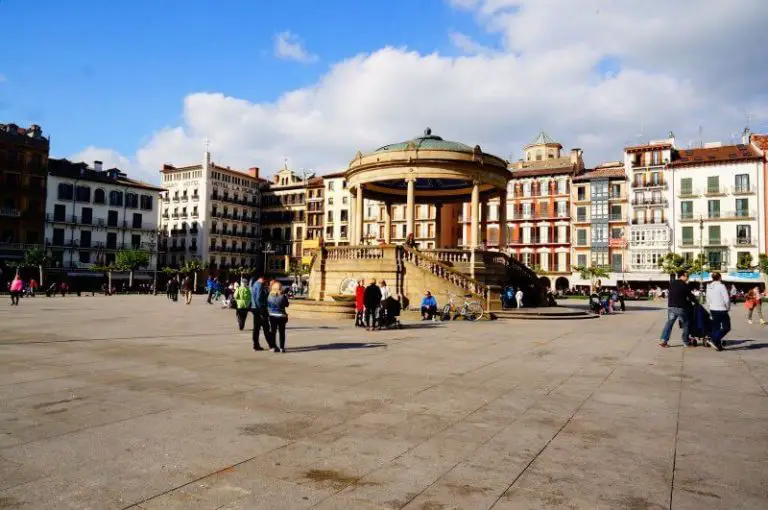
Now Castillo Square is the center and the heart of Pamplona, where the townspeople like to relax. It is from here that the routes to the main tourist attractions diverge.
Like many central squares in Spain, the Plaza del Castillo is surrounded around the perimeter by ancient, low-rise buildings with arcades. Among them there are palaces, a theater, hotels, casinos, shops, numerous residential buildings. A lot of cafes and restaurants.
There is still a cafe “Iruna”, rightfully considered one of the attractions of Pamplona and Spain. Ernest Hemingway liked to be in this cafe. Now there is a statue of the writer inside, and the interior has remained unchanged since the 19th century.
In the historical center, on the small Plaza Consistorial, there is another city attraction: Town Hall.
The town hall looks quite impressive. The twin columns divide into 3 parts a slightly elongated facade; stone statues of Prudence and Justice are installed at the entrance to the building. Throughout the facade of the stucco molding, at the top there is a balustrade, on the roof there are sculptures of lions and an angel with a pipe. Beautiful balconies are arranged on the second and third floors – the beginning of San Fermin is proclaimed from one of them.
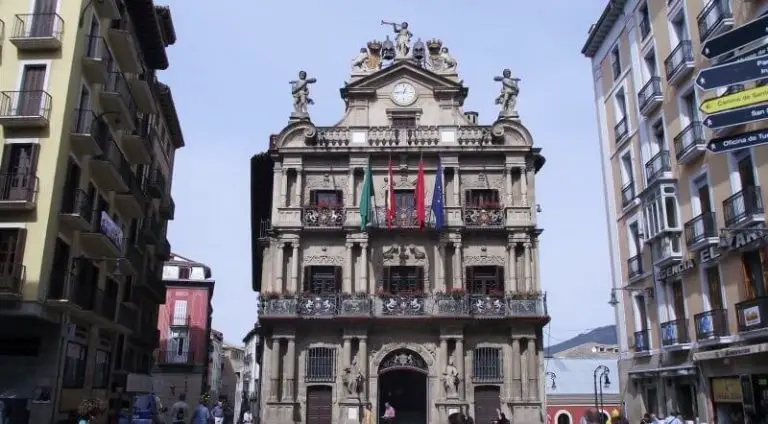
Numerous restaurants and souvenir shops are located near this attraction on Consistorial Square.
The Cathedral of Santa Maria la Real is a magnificent church building in the Gothic style, striking in its monumentality and massiveness.
The interior of the cathedral is very rich, there are many real works of art and historical attractions:
- high windows with beautiful aerial stained-glass windows;
- altar decorations and sculptures in the chapels of John the Baptist (left behind the baptistery) and Sandoval (in the gallery);
- carved from wood and silver plated Romanesque sculpture of the Holy Virgin Mary;
- the famous cloister of the 13th century with a covered gallery on the 2nd floor;
- a spiral staircase leading to the 2nd floor;
- tomb of King Charles III of Navarre and his wife;
- retablo in the side chapels: 2 Gothic, 5 Baroque, 2 Renaissance.
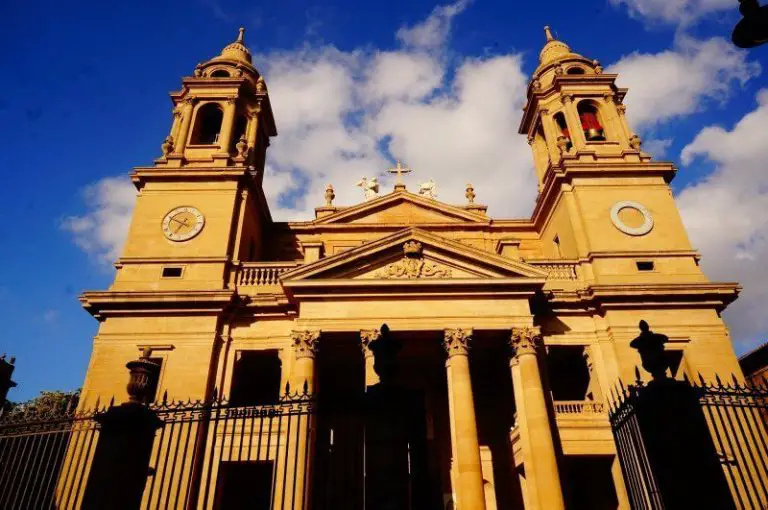
The diocesan museum is now open in the former rooms of the canons. The museum’s exhibits were items of religious art from many temples of Navarra: paintings and sculptures of the Romanesque, Gothic, Renaissance and Baroque eras, as well as gold and silver jewelry from the 13th-18th centuries.
The entrance fee for the cathedral and the museum with its attractions is:
- for adults 5 €;
- for children from 7 to 13 years old – 3 €;
- for children over 13 years old, students and senior citizens – 4 €.
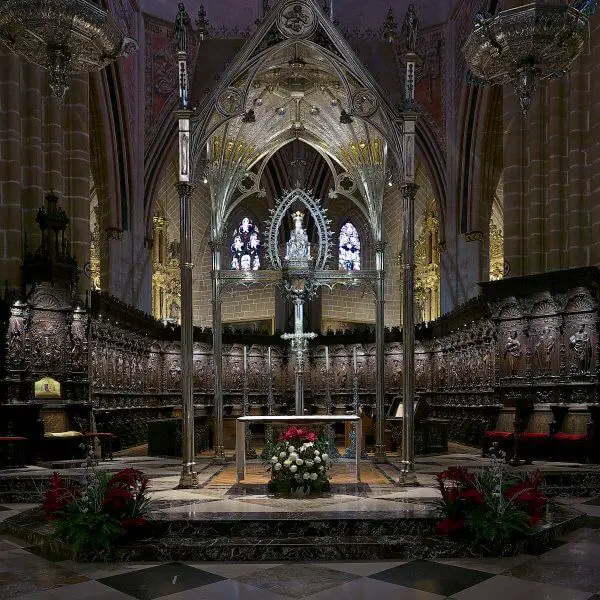
On Sundays, the cathedral is closed, on other days it works according to the following schedule:
- from the last week of March to the last week of October: from 10:30 to 19:00;
- from the last week of October to the last week of March: from 10:30 to 17:00;
- in any season, on Saturdays and holidays, the sights of the cathedral can be visited with a guided tour – beginning at 12:00;
- Climbing the bell tower – daily from 11:00 to 15:00 by appointment.
Religious site address: Calle Dormitalería, 1, 31001 Pamplona, Navarra, Spain.
Official website: https://www.catedraldepamplona.com/catedral/.
Parque Vuelta del Castillo and the old fortress are not the most important sights of the city of Pamplona, but if you have time, you should also look into this place.
The fort, erected in 1571-1645 to defend the city, is not located on a hill, like most ancient fortresses. In addition, this defensive structure has a very interesting layout: it is made in the form of a star, at each end of which, if necessary, soldiers could take up combat positions. The enemy did not see this fortress when approaching the city, but from the fortress itself all the actions of the attackers could be well controlled.
The total area of the attraction – the ancient fort and the surrounding Vuelta del Castillo park – is about 280,000 m². Today, the entire territory of the fortress – pavilions, bastions, castle ditches – are used for cultural recreation, sports and other events.
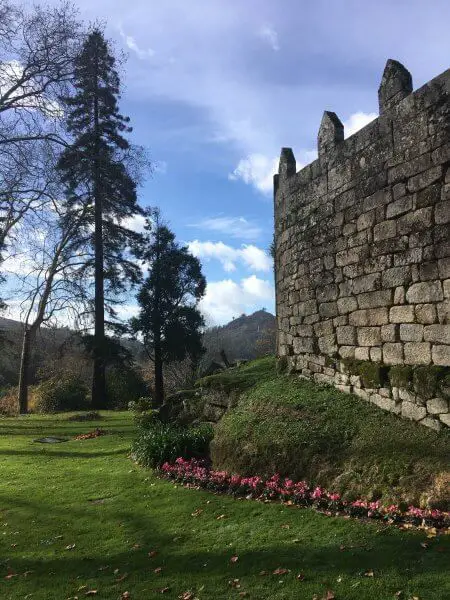
Trees were planted between different parts of the structure, flower beds and trimmed lawns were planted. In the courtyard they also organized a park with flower beds and a network of paths, built a fountain and a playground in a small central square, and set up benches. There are cafes, there are museums.
The oldest historical landmark building, the Polvorin gunpowder warehouse, is now used for art exhibitions. The bakery was also converted into an exhibition hall. A variety of cultural events are organized in a 4-story weapons warehouse.
Attraction address: Avenida del Ejercito 1, 31001 Pamplona, Navarra, Spain.
Accommodation in Pamplona
If you compare with other cities in Spain, then in Pamplona accommodation prices can be called average. For such a flow of tourists, which has been observed here throughout the year, the city has enough hotels, hostels, guest houses, private apartments. But in July, when the San Fermin fiesta takes place with a bull race, there is not enough space for everyone who wants it, and prices rise to unprecedented heights.
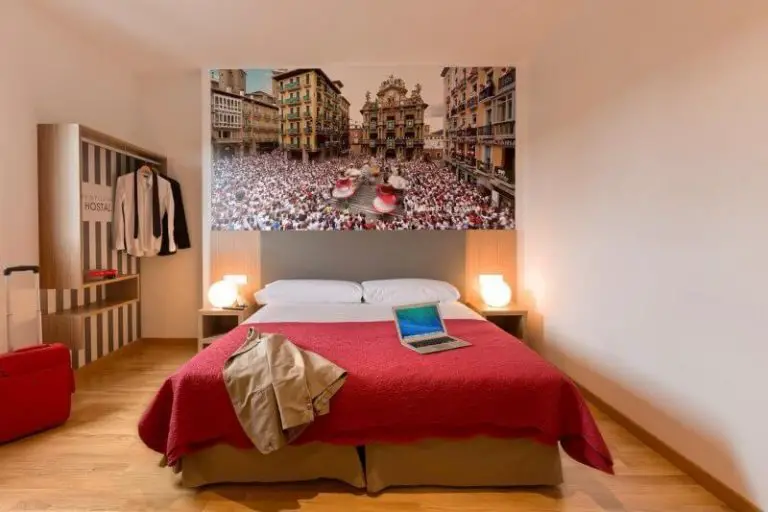
Advice! At the time of San Fermin, you need to book a hotel in advance, at least six months in advance.
| Hostel cost per night | Price of a double room in a 3 * hotel per day | The cost of private family apartments | |
|---|---|---|---|
| During a year | from 20 € | 60 – 90 € | from 85 € |
| During San Fermin | from 65 € | 180 – 400 € | 400 – 1415 € |
Since Pamplona is small, you can stop in any part of the city, although it is most convenient in the historical center. It is here that most hotels are concentrated and offer many apartments.
How to get to Pamplona
The most convenient and affordable way to get to Pamplona is to fly to such large cities of Spain as Madrid or Barcelona, and from there go by bus or train.
The most convenient and fastest way to go to Pamplona is by rail. It takes less than 4 hours to travel from Madrid and Barcelona by direct high-speed train. The cost of the trip is also approximately the same: 30-40 €.
From Madrid, trains to Pamplona run from Madrid-Puerta de Atocha Station.
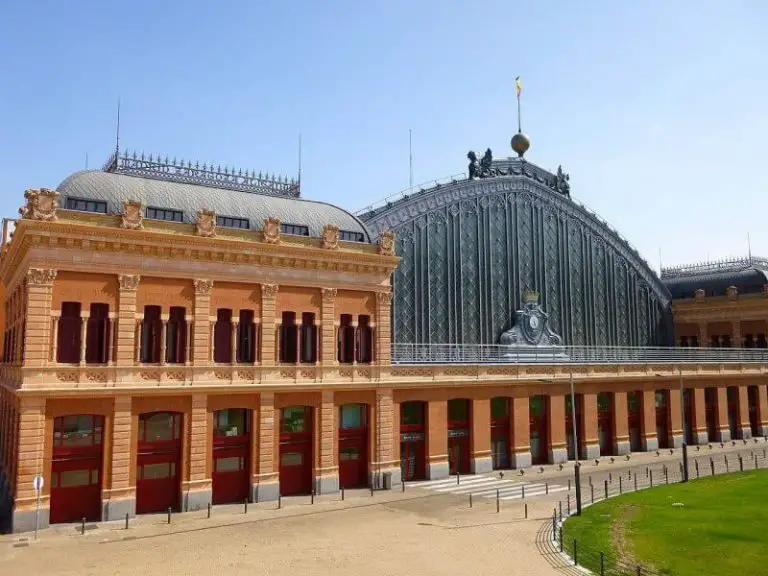
From Barcelona, trains depart for Pamplona from Barcelona Sants Station.
You can find out absolutely all the information about the train schedule and buy tickets on the Spanish Railways website: www.renfe.com
Important! In Spain, bus drivers do not take stowaways for cash, so you must buy a ticket! Tickets are sold on the websites and ticket offices of the bus station, as well as on the websites of the carrier company.
The bus to Pamplona from Madrid takes 5-6 hours, from Barcelona – almost 7 hours. Tickets from these cities will cost 35-60 €, depending on the carrier company, time of departure, place on the bus.
From Madrid, from the Madrid bus station, you can travel with Alsa at www.alsa.es.
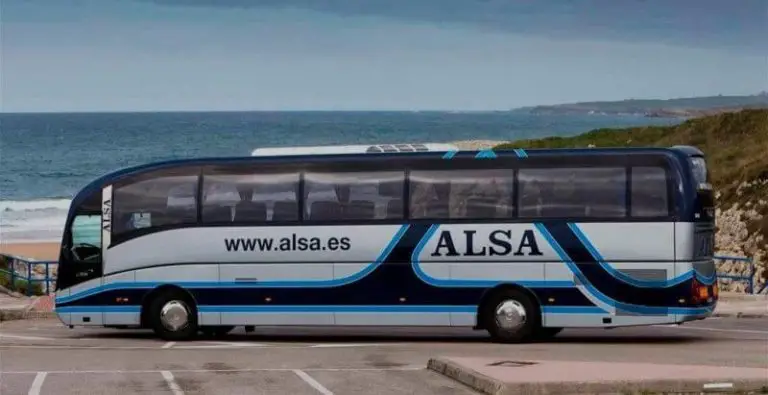
In Barcelona, buses to Pamplona depart from Estacio de Nord and Sants bus stations. Transportation is handled by Vibasa – www.busbud.com/en/bus-company/vibasa.
Important! At bus stations you need to be very careful, because all buses, including to the city of Pamplona (Spain) often stop on other platforms.
All prices on the page are for November 2019.
The most beautiful places of Pamplona: